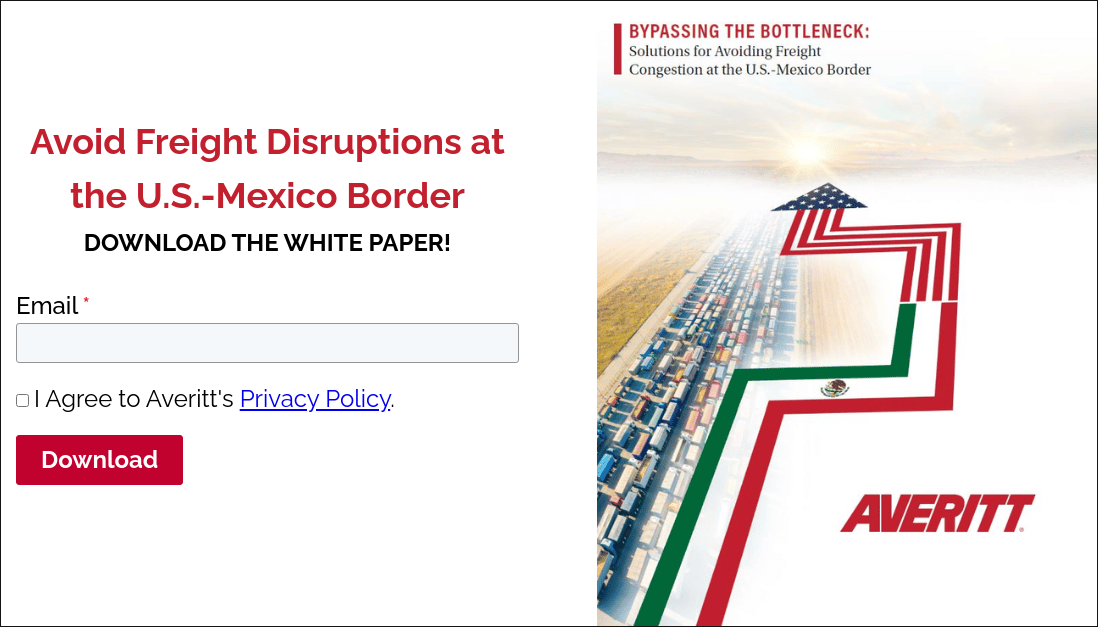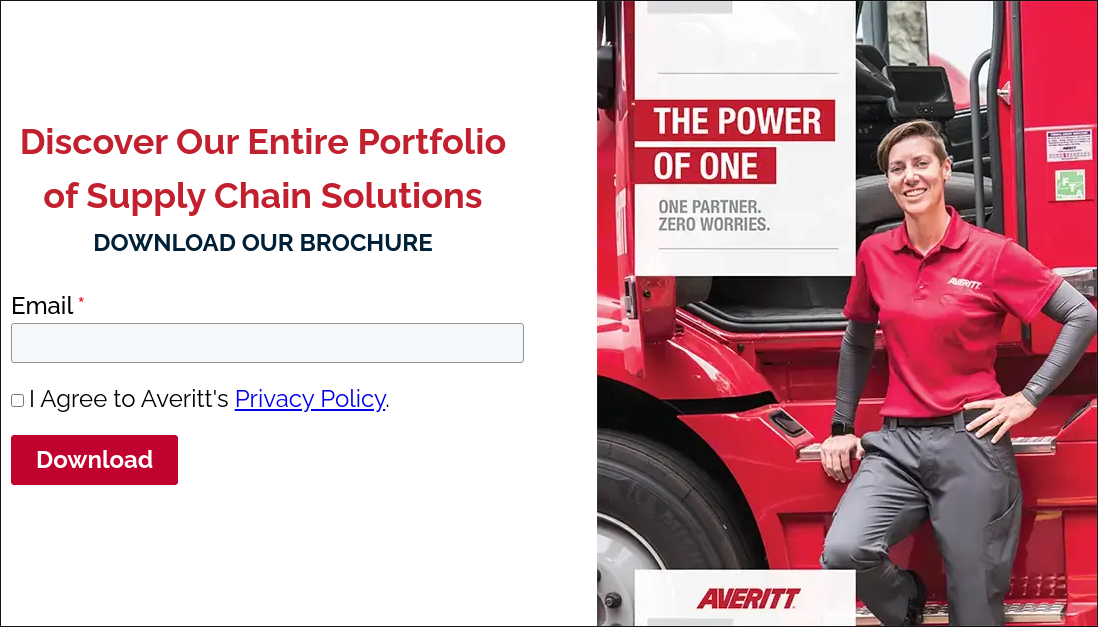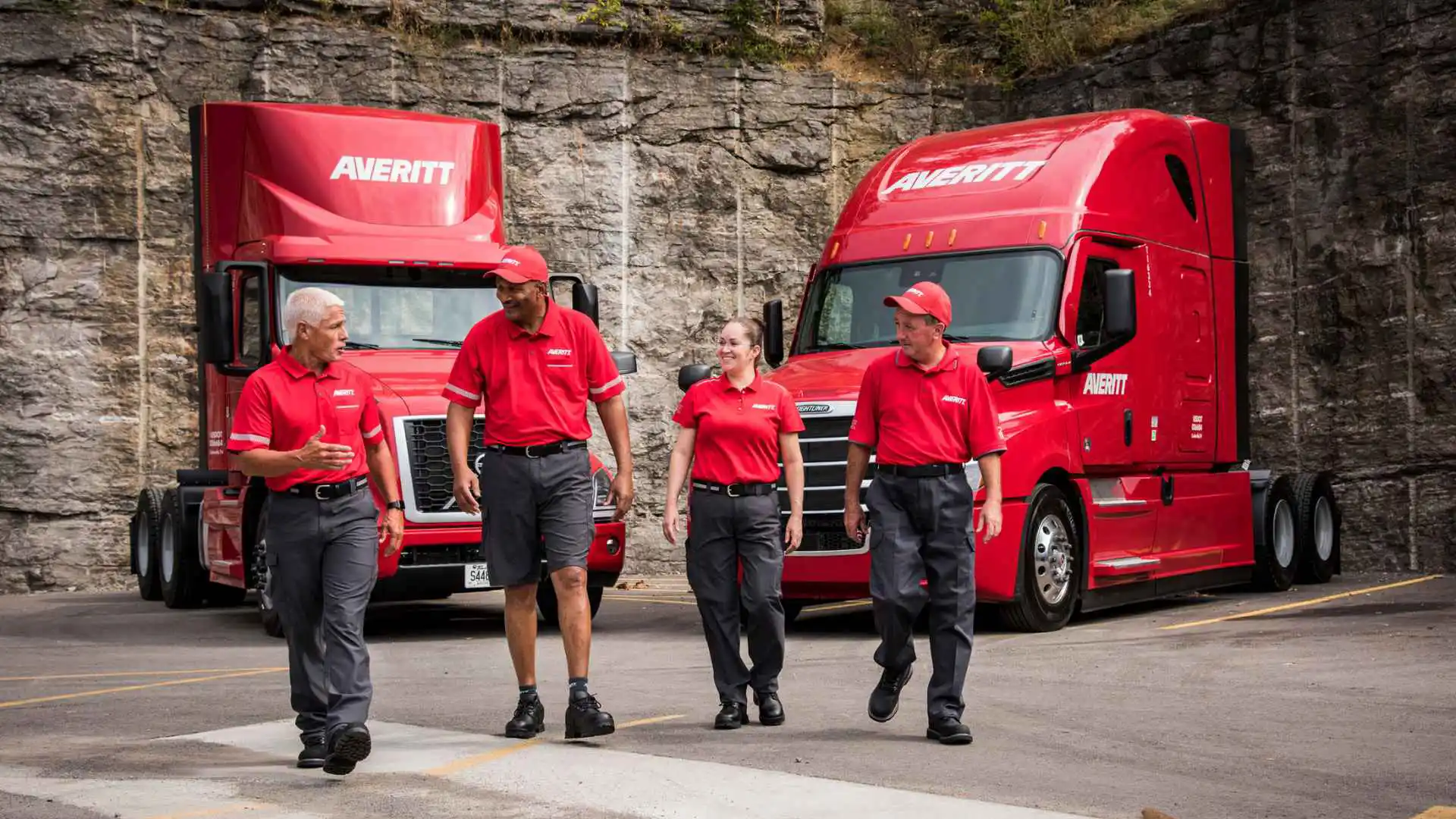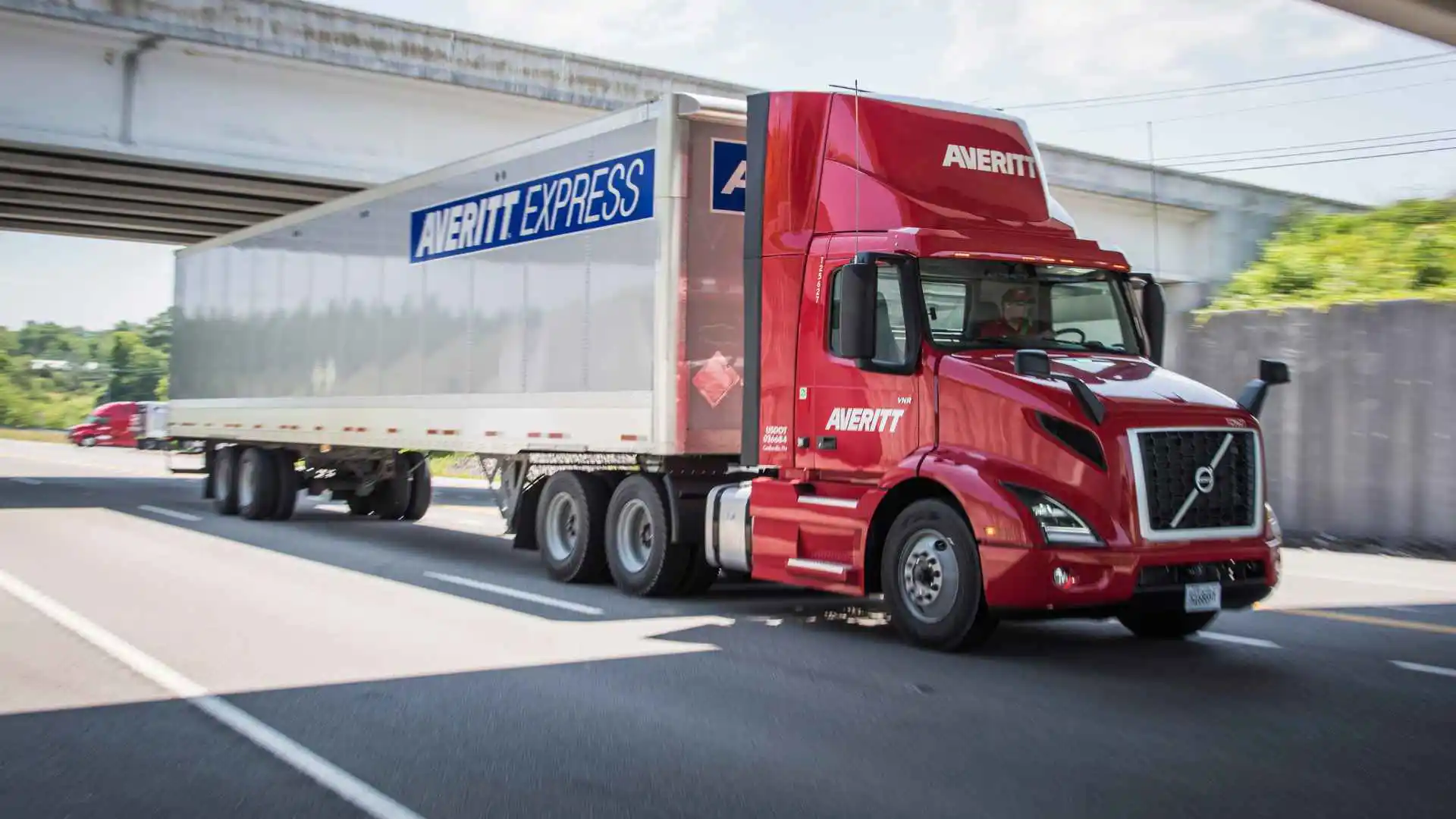In today’s rapidly evolving global trade environment, the concepts of nearshoring and reshoring have become pivotal strategies for companies aiming to enhance supply chain resilience and efficiency. With the significant shift away from reliance on China, businesses are increasingly focusing on bringing manufacturing closer to home, particularly to North America.
This white paper explores the complexities, benefits, and strategic considerations of nearshoring and reshoring, offering insights into how logistics and procurement professionals can effectively transition to these models to support cross-border operations among the U.S., Mexico, and Canada.
Table Of Contents:
1.) Understanding Nearshoring and Reshoring
2.) Historical Context and Evolution
3.) Understanding Nearshoring and Reshoring
4.) Drivers of Nearshoring and Reshoring
5.) Benefits of Nearshoring and Reshoring
6.) Challenges and Considerations
7.) Case Studies and Real-World Examples
8.) Averitt's Role in Supporting Nearshoring and Reshoring
9.) Future Trends and Predictions

Understanding Nearshoring and Reshoring
Nearshoring involves relocating production facilities closer to the company’s primary market, typically within the same continent. Reshoring, conversely, entails bringing manufacturing back to the company’s home country. Both strategies aim to reduce supply chain disruptions, lower transportation costs, and improve response times to market demands.
The strategic shift toward nearshoring and reshoring has gained momentum due to various global factors, including geopolitical tensions, trade wars, and the COVID-19 pandemic, which have exposed the vulnerabilities of long, complex supply chains.

Historical Context and Evolution
The concept of nearshoring is not new. In 1965, the Mexican government launched the Maquiladora Program to attract foreign investment and boost industrialization in the border region. This initiative laid the groundwork for Mexico’s current role as a manufacturing hub within North America.
The practice of nearshoring has gained significant traction in recent years, driven by the need to mitigate the risks associated with distant supply chains. For example, the United States-Mexico- Canada Agreement (USMCA), which replaced North American Free Trade Agreement (NAFTA), has further incentivized companies to relocate manufacturing to Mexico by streamlining customs clearance procedures and reducing trade barriers.

Drivers of Nearshoring and Reshoring
Several factors are driving the trend toward nearshoring and reshoring:
1.) Geopolitical Stability: Companies are seeking to avoid the uncertainties and disruptions caused by geopolitical tensions and trade wars.
2.) Cost Efficiency: While labor costs may be higher in North America compared with Asia, the reduction in transportation costs and tariffs can offset these expenses.
3.) Supply Chain Resilience: Shorter supply chains are less susceptible to disruptions from global events such as pandemics or natural disasters.
4.) Market Responsiveness: Being closer to the end market allows companies to respond more quickly to changing consumer demands and market conditions.
Additionally, countries like Mexico have benefited immensely from these trends. Significant foreign investments are boosting Mexico’s manufacturing capabilities, reinforcing the importance of robust logistics solutions to handle increased trade volumes. From January to May 2024, Mexico’s foreign direct investment in Mexico reached $38.2 billion – an astounding 35% increase over the same period in 2023.
Benefits of Nearshoring and Reshoring
Nearshoring and reshoring offer significant economic benefits. By relocating production closer to the end market, companies can achieve faster turnaround times and lower inventory costs. Additionally, these strategies help reduce transportation costs and tariffs, enhancing overall cost efficiency. For instance, manufacturing in Mexico allows companies to take advantage of lower labor costs while benefiting from proximity to the U.S. market, which can lead to substantial cost savings.

Reduction in Supply Chain Risks
Nearshoring provides enhanced control over supply chains, reducing the risks associated with long lead times and complex logistics networks. Companies can better manage quality control, compliance, and intellectual property protections when production is closer to home. This control is crucial for industries such as automotive and electronics, where precision and reliability are paramount.
Environmental Benefits
Reducing the distance goods travel not only lowers transportation costs but also decreases the carbon footprint of supply chains. Shorter supply chains mean fewer emissions from transportation, contributing to sustainability goals. Companies that prioritize environmental responsibility can enhance their brand reputation and meet regulatory requirements more effectively by adopting nearshoring and reshoring strategies.

Challenges and Considerations
Despite the benefits, nearshoring and reshoring come with their own set of challenges. One significant issue is the infrastructure and logistics capabilities in the new locations. For example, while Mexico offers many advantages for nearshoring, the saturation of traditional cross-border routes has led to significant delays and congestion.
A key factor contributing to the overcrowded U.S.-Mexico border is the marked imbalance in the flow of cross-border trade between the two countries. For every three trailers that cross the border into the U.S., only one makes the return journey to Mexico loaded with goods. This disparity is due to the remarkable growth in manufacturing and exports from Mexico to the United States, which far outpaces the southbound flow of goods.
 This imbalance has created logistical complications, as empty U.S. trailers must be returned to Mexico to accommodate the next round of shipments. This only adds to the already congested land routes.
This imbalance has created logistical complications, as empty U.S. trailers must be returned to Mexico to accommodate the next round of shipments. This only adds to the already congested land routes.
On a broader scale, the imbalance also highlights the need for comprehensive, creative solutions and emphasizes the value of experienced logistics partners like Averitt, who are equipped to navigate these complexities.
Solutions, such as less-than-truckload (LTL) pool distribution and transloading at border towns, can help shippers mitigate these issues.

1.) Regulatory and Compliance Issues
Transitioning to nearshoring and reshoring also involves navigating different regulatory environments. The shift from NAFTA to USMCA has brought changes that companies must adapt to. The USMCA, effective since July 2020, has made it easier and more cost-effective to move goods among Mexico, the U.S., and Canada by eliminating several trade barriers and implementing standardized regulations. However, understanding and complying with these regulations can be complex.
2.) NAFTA to USMCA Transition
The transition from NAFTA to USMCA represents a significant regulatory shift that companies must navigate. The USMCA has introduced several changes aimed at modernizing trade and reducing barriers. For instance, it includes stronger labor protections, updated rules of origin for automotive manufacturing, and improved intellectual property protections. These changes require companies to reassess their compliance strategies and ensure they meet the new standards.
3.) Impact on Supply Chains
The impact of these regulatory changes on supply chains has been profound. Companies must navigate a more complex regulatory environment, but the benefits of smoother cross-border operations and reduced tariffs are significant. For example, automotive manufacturers have adjusted their supply chains to comply with new rules of origin, ensuring that a higher percentage of vehicle content is made in North America to qualify for tariff-free trade.
4.) Labor Market Considerations
Another critical factor is the labor market. While nearshoring to Mexico offers cost advantages due to lower labor costs, finding and retaining skilled labor can be challenging. Companies must invest in training and development to build a capable workforce. Additionally, reshoring to the U.S. may involve higher labor costs, necessitating a focus on automation and advanced manufacturing technologies to maintain competitiveness.
The influx of manufacturing activity in Mexico is putting pressure on the local labor market, making it essential for companies to develop strategies for workforce development.
Watch the short video below to learn about Averitt's Mexico Cross-Border Solutions!
Case Studies and Real-World Examples
Several companies have successfully implemented nearshoring and reshoring strategies. For instance, numerous automotive manufacturers have established production facilities in Mexico to take advantage of its strategic location and trade agreements under the USMCA. These companies have reported improved supply chain resilience and cost savings.

Lessons Learned
From these implementations, several lessons can be drawn. First, companies must thoroughly evaluate the logistics infrastructure and regulatory environment of the nearshoring destination. Second, investing in local workforce development is crucial for long-term success. Finally, partnering with experienced logistics providers like Averitt can help navigate the complexities of cross-border trade.
In order to support North American shippers, Averitt has strategically expanded its operations in Texas to support the nearshoring boom, ensuring seamless cross-border operations and enhancing supply chain efficiency. In addition to distribution centers along the border in El Paso, Laredo, Harlingen, and Del Rio, the company is expanding infrastructure along the U.S. Interstate 35 corridor with a new distribution center in San Antonio to power seamless inland freight flow.
Averitt’s Role in Supporting Nearshoring and Reshoring
Averitt offers comprehensive logistics solutions that support nearshoring and reshoring initiatives. With over 50 years of experience and a robust infrastructure, Averitt is well-equipped to handle the complexities of cross-border trade. Backed by five distinct yet connected service verticals, Averitt provides a wide variety of solutions, including LTL, Truckload, Distribution and Fulfillment, Dedicated Fleets, and Integrated and Global Logistics, all designed to streamline your supply chain operations. Strategic
Expansions and Infrastructure
Averitt has strategically expanded its operations to support the nearshoring boom. For instance, our facilities in Texas and partnerships with Mexican logistics providers ensure seamless cross-border operations among the U.S., Mexico, and Canada.
“The Power of One” Solution
At Averitt, we believe in a “The Power of One” approach that offers a unified solution to manage all your logistics needs. This strategy simplifies communication and coordination, reduces costs, and ensures consistent service quality. By consolidating your logistics operations with Averitt, you gain a single point of contact and a reliable partner dedicated to your success.
Future Trends and Predictions
The trend toward nearshoring and reshoring is expected to continue as companies seek to enhance supply chain resilience and reduce risks. Advances in automation and digital technologies will further facilitate this transition. For example, the adoption of Industry 4.0 technologies, such as Internet of Things (IoT) and artificial intelligence (AI), can streamline production processes and improve supply chain visibility.
Technological Advancements
Technological advancements will play a crucial role in the future of nearshoring and reshoring. Companies that invest in advanced manufacturing technologies and integrated logistics platforms will gain a competitive edge. Additionally, the development of green logistics solutions will help meet sustainability goals and reduce the environmental impact of supply chains.
Long-Term Outlook
In the long term, nearshoring and reshoring will redefine global supply chains. Companies that proactively adopt these strategies will be better positioned to navigate the uncertainties of the global trade environment. The shift toward localized production will drive innovation and create new opportunities for economic growth in North America.
The Power of One
Nearshoring and reshoring present significant opportunities for companies to enhance supply chain resilience, reduce costs, and improve market responsiveness. By understanding the complexities and strategic considerations of these models, logistics and procurement professionals can effectively transition to localized production.
Averitt’s comprehensive logistics solutions, including our “Power of One” approach, provide the support needed to navigate this transition successfully. Partner with Averitt to streamline your cross-border operations, optimize your supply chain, and achieve long-term success.
At every turn in your supply chain, Averitt has you covered:

Watch the video below to learn how "The Power of One" approach can help you achieve greater efficiency at every turn in your supply chain!














